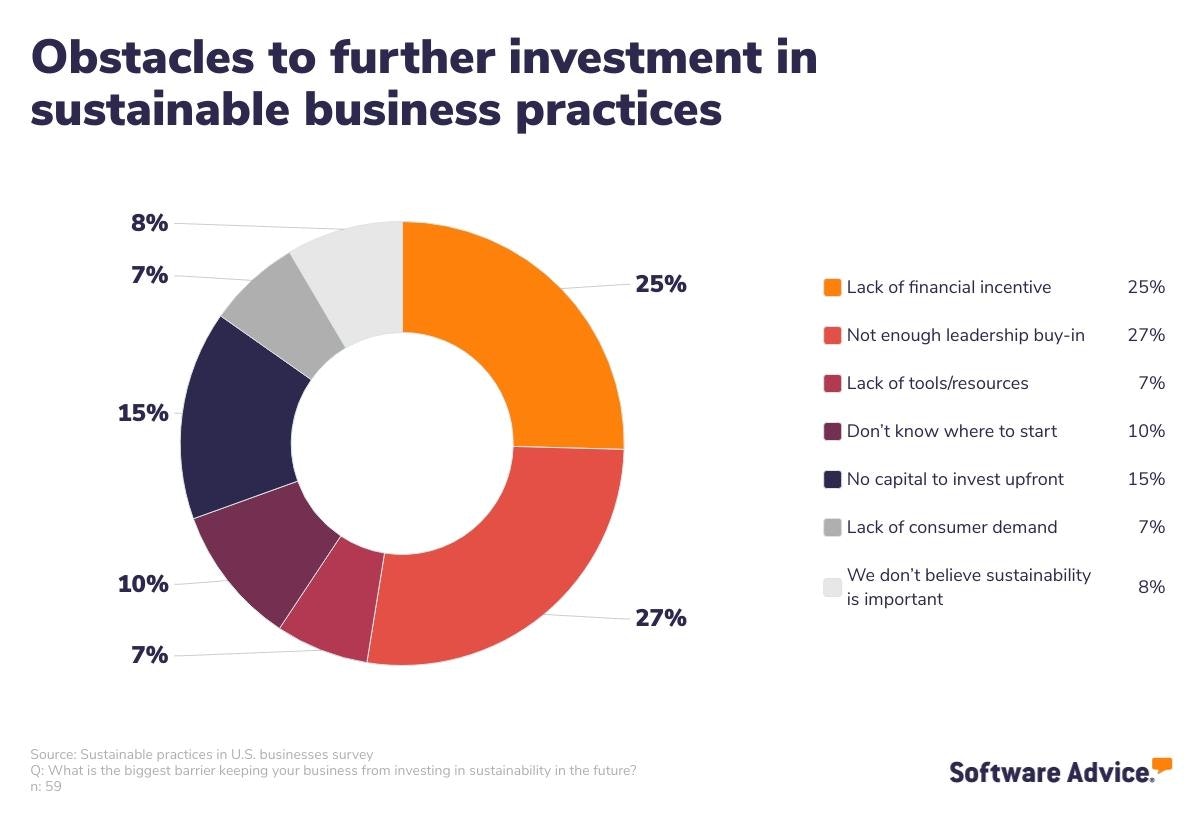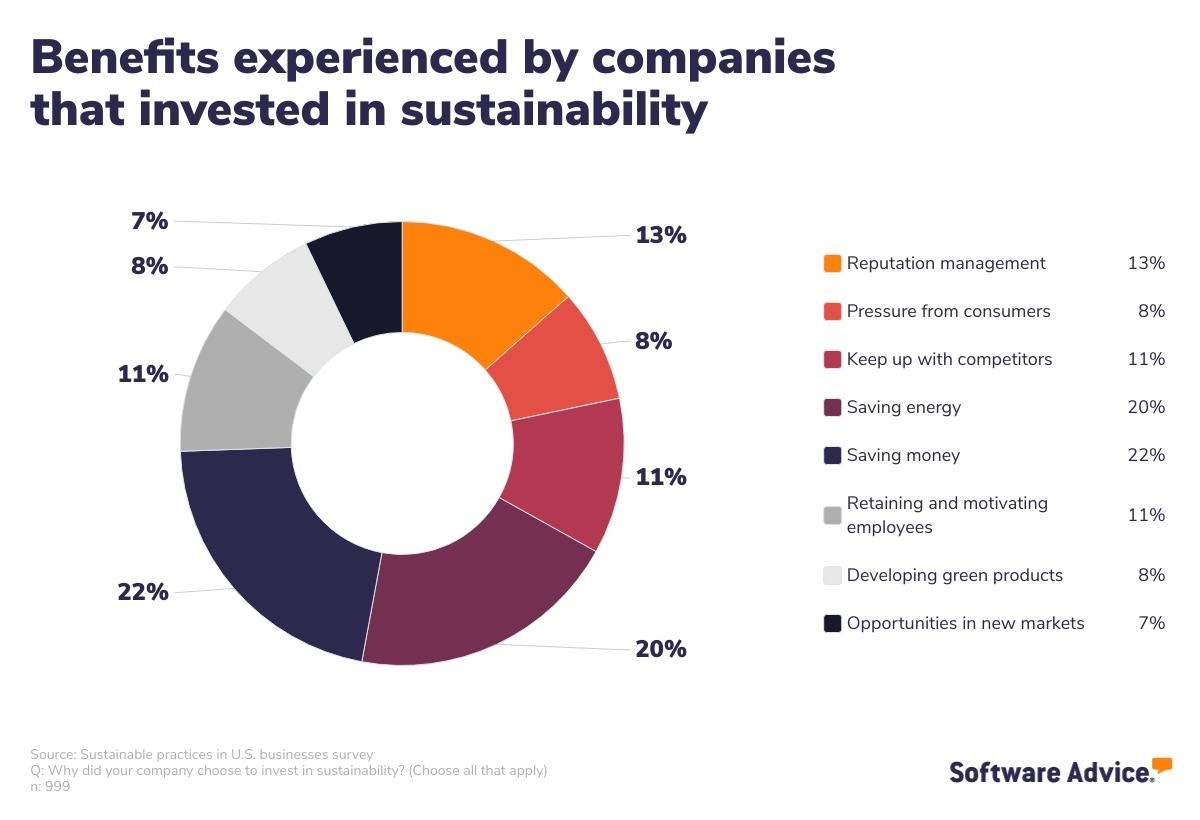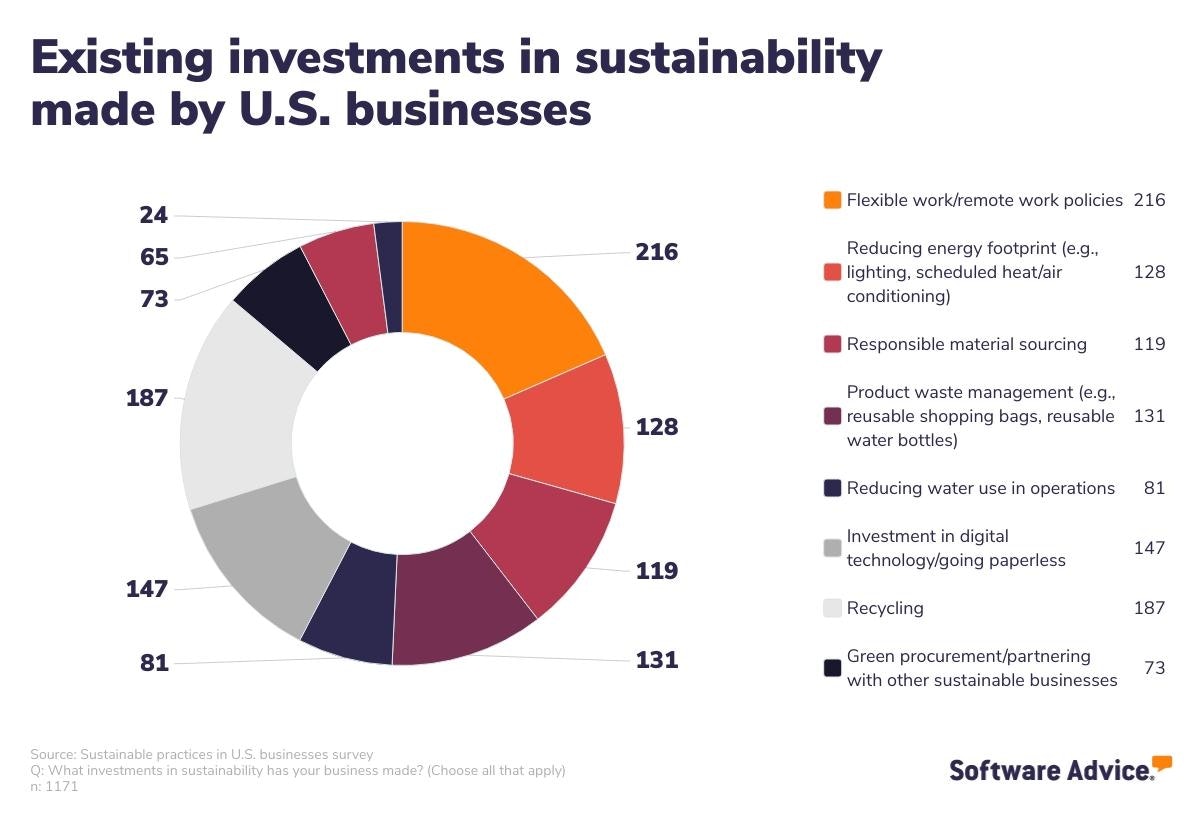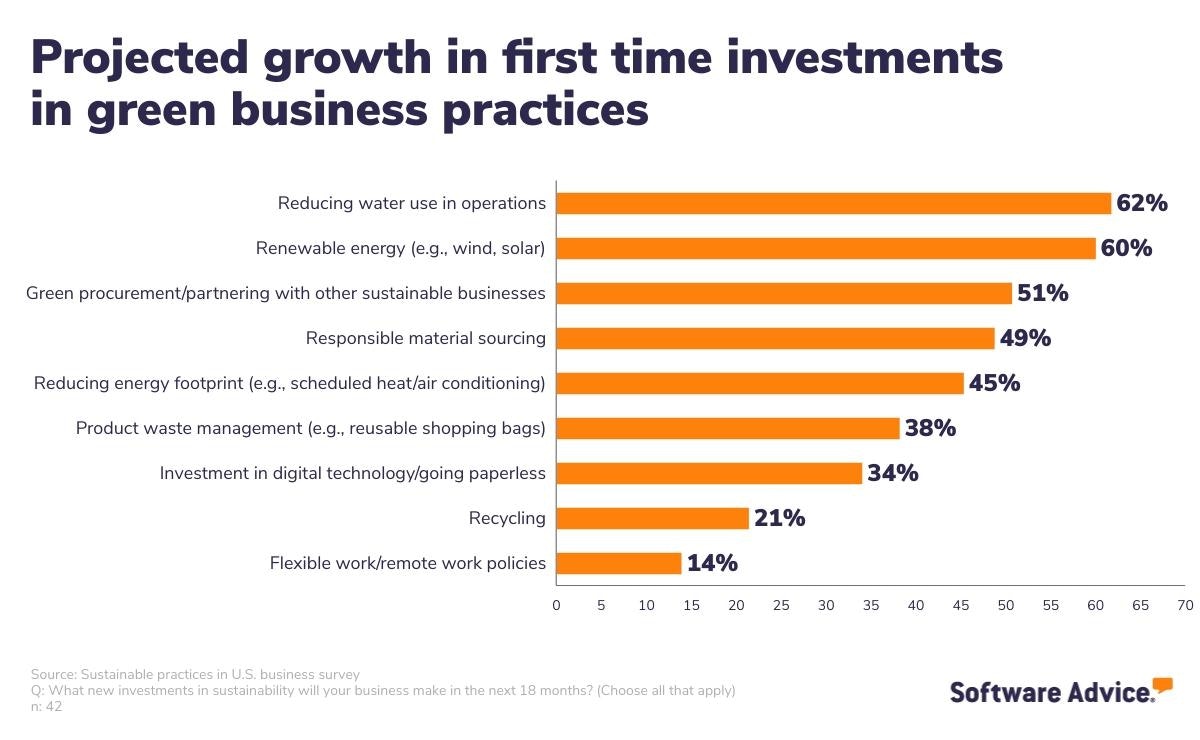2021 Green Business Practices Drive Cost Savings for Small and Midsize Investors
On February 19, 2021, the United States reentered the Paris Climate Agreement, a landmark international accord to address the negative impacts of climate change. The reentry sent strong signals worldwide that the U.S. would once again prioritize climate health and incentivize sustainability.
And while the country’s initial entry in 2015, exit in 2017, and reentry in 2021 may signal a lack of climate consensus among political leadership, our data shows that small and midsize American businesses (SMBs) have never really wavered in their investments.
We surveyed 400 U.S. businesses and found that only five percent (24 respondents) had made no investments (to date) in sustainable, green business practices.
In this report, we’ll look at how businesses are investing in sustainability, how those investments are driving cost savings and bolstering reputations, and some best practices for getting a sustainability initiative off the ground at your company.
More than 25% of businesses experienced cost savings due to their investment in sustainability
For the five percent of respondents reporting no plans to invest in sustainable business practices, more than half cited either “not enough leadership buy-in” or “lack of financial incentive” as the biggest barrier to investment.
These responses are closely related; business leaders often want to see evidence of financial benefit before green-lighting a new investment or change in business strategy.

Reluctant business leaders skeptical of whether investing in green business practices will bring measurable gains should consider the overwhelming reports of benefits from businesses that have invested already.
More than 25% of businesses that invested in sustainability experienced related cost savings. Other commonly reported benefits include increased internal morale, positive change in brand reputation, and higher customer retention.

Our survey respondents gave a ringing endorsement of their sustainable practices, touting benefits that may influence more skeptical business leaders with concerns over the return on investment (ROI) green business practices are likely to yield.
Remote work, recycling, and digitization top list of established sustainable business practices
When we asked respondents what sustainable business practices the companies they work for were already engaging in, we got an array of responses. The most common investments were remote work, a recycling program, and going paperless by digitizing business processes.

This range of investments not only demonstrates the commitments SMBs have made to green business practices, but also the many intersections of sustainability and business practices.
With as many opportunities as these intersections provide, they can also prove challenging to those investing in sustainable business practices for the first time. As Gartner explains, because there is no single, authoritative definition or example of green business practices, stakeholders may have different interpretations of key terms, which can make it a challenge to lead productive conversations about sustainability initiatives (full article available to Gartner clients).
Each team or role will understand sustainability through their own lens:
Public relations may see it as community engagement.
Facilities management may see it as water conservation and renewable energy contracts.
Human Resources may see it as diversity, equity, inclusion, and flexible working.
Marketing may see it as a market-facing strategic differentiator and brand issue.
Supply chain may see it as a responsible sourcing or materials challenge.
IT may see it as a data management and technology innovation opportunity, or perhaps focus on energy-efficient data centers or a virtual workplace.
Whether you want to invest in digital technology and offer a flexible remote work policy or switch to reusable bags and install solar panels, the most important part is getting buy-in from each team within your organization. Make sure each team understands how they can help your business achieve your new sustainability goals. If you need a place to start, check out our sustainability software buyers guide.
New investments show increased appetite for green procurement, reduced water usage, and renewable energy
In addition to asking respondents what investments in sustainability their businesses had already made, we also asked about their planned green business practices for the next 18 months.
The majority indicated plans to maintain existing sustainability investments in remote work, recycling, and digitization. When it comes to new investments, a new set of green business practices emerged.
Reducing water use in operations, green procurement/partnering with other sustainable businesses, and renewable energy (e.g., wind, solar) saw the highest rates of expected new adoptions, each reporting above a 50% increase in intended investments compared to existing investments.

These trends indicate a potential shift in how business leaders are imagining a sustainable future for their company.
While past investment trends in things like remote work and digitization reflect internal changes, increasing interest in sustainable investments suggests that businesses are beginning to think about green business practices in their partnerships and larger business community.
An increase in planned investments in alternative energy sources may also come from an increase in federal, state, and local incentives. If your business is interested in learning about possible subsidies and incentives in your area, check out this website hosted by the Department of Energy.
Sustainable and attainable for every business
Whether your company has invested in sustainability for years and is ready to double down and make an investment in clean energy or you’re considering which green business strategies to implement for the first time, here are some things to consider based on what your peers reported:
Think outside the box: Sustainable practices aren’t limited to shrinking your carbon footprint and striving for waste reduction. While these are excellent green practices, your business can also go green by adopting a remote work policy.
Digitize your processes: Digitizing key business processes is a popular green practice for small and midsize businesses. Check out digitization tools such as accounting software and inventory management software to reduce paper waste, and energy management software to set goals and monitor your energy use and costs.
Build a green network: Businesses are making new investments in green procurement and alternative energy sources. If you’re interested in taking steps like these, we suggest reaching out to your local business community to see if there are existing investments in green infrastructure in your area that you could get involved in.
Methodology:
Results presented are based on a Gartner study of sustainability practices and trends across American small and midsize businesses. The research was conducted in March 2021 among a total of 402 U.S. based respondents. Respondents were screened for employment status (employed full time), and number of employees at respondent’s company (1-1000).